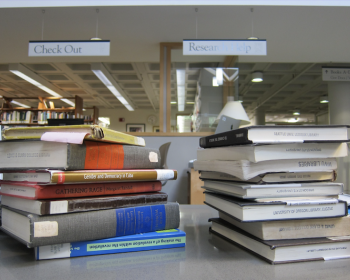the bauhaus at 100: innovation, collaboration, evolution
Be sure to swing by Watzek Library to see our latest Special Collections display.
Open gallery

Established in 1919 just after the end of the First World War, the Staatliches Bauhaus represented not only artistic innovation but also a utopian vision of a more peaceful and productive future. The school’s founder, architect Walter Gropius, sought to circumvent what he saw as the existential impoverishment of the individual, who had been diminished by the trauma of war and the increased mechanization of modern life. He envisioned a broad community of artists and craftspeople engaged in collaborative and creative effort. Though the Bauhaus existed as a school for just 14 years, its core principles and the artists who contributed to its evolution have had an immeasurable influence on the trajectory of both modern design and art education.
Curated by Lewis & Clark students Jack Hanning ’21, Scott Stewart-Rowden ’20, with Professor of German Studies, Therese Augst, this exhibit highlights the people, places, and objects that defined the Bauhaus. A century after its founding, we celebrate the spirit of innovation and creative dynamism that the Bauhaus fostered.
More Libraries Stories
Aubrey R. Watzek Library is located in Watzek on the Undergraduate Campus.
email watzek@lclark.edu
voice 503-768-7270
Aubrey R. Watzek Library
Lewis & Clark
615 S. Palatine Hill Road
Portland OR 97219

